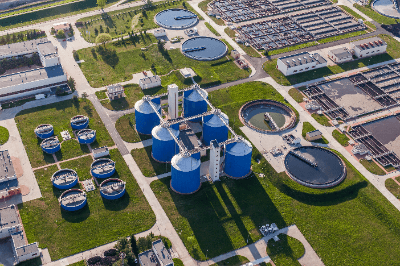What Is a Water Treatment Plant?

A water treatment plant is a facility that purifies and treats water.
Its main purpose is to purify water to provide people with safe and clean drinking water. However, it may also treat industrial water and sewage. Sewage and wastewater contain various impurities, many of which are toxic.
If toxic substances in water are discharged into the environment without treatment or used as domestic water, they can cause serious damage to the human body and the environment. Water treatment plants can remove or detoxify these harmful substances by treating water. Water treatment plants are indispensable for the safe use of water in an environmentally friendly manner.
Uses of Water Treatment Plants
Water treatment plants are used for diverse purposes. The main applications are to secure drinking water, to supply water for industrial and agricultural use, and to treat sewage.
1. Drinking Water Supply
Water treatment plants provide safe and clean drinking water. They purify, filter, disinfect, and treat raw water before it is supplied as tap water.
2. Industrial and Agricultural Water Supply
Water is essential for cooling and cleaning in industrial activities, such as in factories and facilities. Water treatment plants treat and supply water that meets the quality requirements for industrial use. They are also used for supplying agricultural water for irrigation and crop cultivation.
3. Sewage Treatment
Factory wastewater and sewage must be treated before being discharged into rivers or the sea. Water treatment plants process sewage and purify it, ensuring it meets environmental discharge standards.
Principle of Water Treatment Plants
Water treatment plants operate on various principles, depending on the substance to be treated. Key elements of these plants include:
1. Filtration
Filtration removes suspended solids from raw water. Techniques like sand filtration, charcoal filtration, and microfiltration are used to eliminate impurities.
2. Sedimentation
This process uses gravity to separate impurities in water. Coagulants or coagulating agents are added to agglomerate minute suspended solids and microorganisms, forming large particles. These are then removed in the sedimentation tank.
3. Chemical Treatment
Chemical treatment alters substances in water, such as by adjusting the pH level. It is also used for extracting valuable metals and other substances. For example, adding sodium hydroxide to water causes heavy metals to precipitate, allowing for their separation.
4. Sterilization
Sterilization methods, including chlorination, ultraviolet irradiation, and ozone treatment, remove pathogens and bacteria, rendering microorganisms harmless.
5. Reverse Osmosis or Deep Filtration
Reverse osmosis involves using a thin film and high pressure to remove impurities from water. It is effective in desalinating seawater and removing microscopic impurities. Deep filtration uses microscopic filter media for purification.
Types of Water Treatment Plants
There are various types of water treatment plants, each serving different purposes:
1. Water Treatment Plant
These facilities treat raw water to supply drinking water, using processes such as filtration, sedimentation, and disinfection.
2. Sewage Treatment Plant
Sewage treatment plants process domestic wastewater, transforming it into environmentally safe water for discharge. Techniques used include filtration, sedimentation, and biological decomposition.
3. Seawater Desalination Plant
Seawater desalination plants convert seawater into freshwater using reverse osmosis membranes. The desalinated water is further sterilized for use as drinking or industrial water.
4. Industrial Water Treatment Plant
These plants treat and supply water for industrial facilities, adapting the treatment method to the water’s intended use. Rainwater treatment is also common, involving filtration, sedimentation, and disinfection.